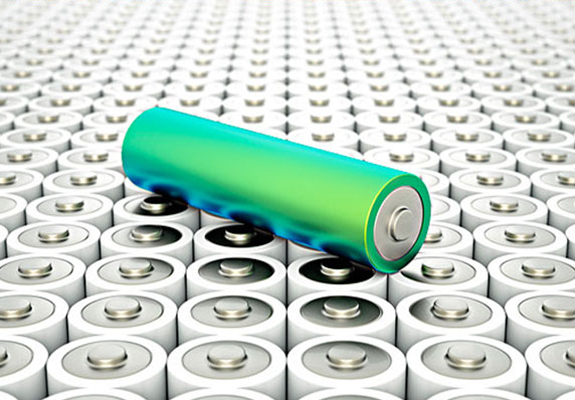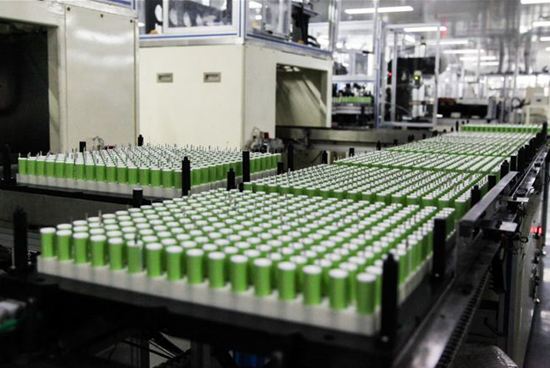Li-Ion and Li-Polymer Battery Comparison
Dec 16, 2019 Pageview:1539
Every portable device depends upon a battery in order to work, for instance cellphones. The battery life of some of these devices is better than the others. The batteries in the devices are either made of lithium ion (Li-ion) or lithium polymer (Li-polymer). When it comes to these two battery types, there is often a debate among the modern consumers of electronics. Therefore, this article will explain the differences and much more between the lithium ion batteries and lithium polymer batteries.
Which Type Of Battery Is Better, Li-Ion Or Li-Polymer Battery?
Both of these batteries have their own benefits and drawbacks. Generally, one of the pros of a Li-ion battery is that they have a power density that is quite high, and when it eventually becomes really low then the batteries become difficult to charge, also known as the memory effect. Furthermore, they are drastically lower in cost as compared to Li-polymer. Li-ion batteries are known to be very efficient and are packed with a massive amount of energy. However, Li-ion batteries can eventually become unstable, suffer due to aging, and can possibly become dangerous. Inside the battery, if anything alters the barrier between the negative and the positive electrode, then combustion can take place due to the chemical reaction which will result in a fire. As the popularity of Li-ion batteries has grown in consumer electronics, many businesses started cutting corners in order to lower their costs. Even though quality batteries are safe, one should always take precaution when purchasing a no-name brand.
On the other hand, the Li-polymer batteries are usually flexible and strong, especially their size, shape, and their build. Furthermore, they are extremely lightweight with a very low profile and have a less chance of leaking electrolyte. However, these Li-polymer batteries are far from being perfect. They are much more expensive when it comes to manufacturing them. Plus, their energy density, which is the quantity of power that it’s able to store, is lower than a Li-ion battery. Additionally, the lifespan is also lower as compared to Li-ion batteries.
What Is The Difference Between Li-Ion And Li-Polymer Battery?
The following differences between the two types of batteries have been analyzed from various aspects.
1. Different Raw Materials
Both Li-ion batteries and Li-polymer batteries consists of a different raw material. The electrolyte in the Li-ion battery is either liquid or is a colloid. On the other hand, the Li-polymer battery’s electrolyte has a polymer electrolyte, which is either solid or is colloidal, and also an electrolyte that is organic.
2. Both Batteries Are Shaped Differently
The Li-polymer battery is easily shaped and can be made slimmer with a thickness of about 0.5mm. Due to the electrolyte being solid in its colloidal state, the Li-polymer battery can be deformed and bent to almost 90°.
On the other hand, the Li-ion battery has a shell made of aluminum with a liquid electrolyte. Plus, the material in its outer packaging is also made up of aluminum as its secondary package. Due to the electrolyte being a liquid, it is difficult to shape it. Because of this, the Li-polymer battery has certain advantages over the Li-ion batteries. For instance:
(a) Li-polymer can be made slimmer with a thickness of 1mm or less.
(b) Li-polymer is light in weight as compared to other steel shell and aluminum shell batteries.
(c) Li-polymer has a higher power due to its structural characteristics.
3. Both Batteries Are Manufactured Differently
A high quality Li-ion battery is thicker, while a high quality Li-polymer battery is slimmer. Therefore, when it comes to the applications, the thinner battery is more expandable and preferable. The shapes can easily be customized and tailored to its customers’ needs. Furthermore, it makes complete use of its space, the models can be quickly converted, and has an increased capacity. Hence, they can respond quickly to the demands of the market.
4. Both Batteries Have A Different Capacity
The Li-polymer batteries have a larger capacity, and the lithium-shell batteries of similar size have a capacity that is 10 – 15% more. Due to its packaging and improved heat dissipation, batteries that have a capacity higher than 10Ah aren’t really difficult for Li-polymer batteries. Currently, batteries with a large capacity of 30Ah and a lot more don’t need special structure or packaging design. Hence, this development in slimmer batteries and batteries with larger capacities is a major breakthrough for the Li-polymer batteries.
5. Safety
In an environment with high pressure and high temperature the Li-ion batteries can easily explode. On the other hand, the Li-polymer batteries’ outer casing consists of a plastic film that is made of aluminum; hence the battery has no leakage issues thanks to the colloidal solid electrolyte inside it. Hence, even if it gets really hot, the battery will not explode.
6. Both Batteries Have A Different Voltage
The Li-polymer battery is composed of a polymer substance. Therefore, it can be constructed into a combination with multi-layers inside the battery cell in order to get a high voltage, with the battery cell having a nominal capacity that is about 3.6V. In order to get high voltage when used practically, multiple cells can be connected in a series in order to create the best high voltage platform that works.
7. Charging Life
The Li-ion batteries usually have a range that starts from 100 to 300 cycles. On the other hand, the Li-polymer batteries usually reach 300 to 400 cycles.
How Do You Use Li-Ion And Li-Polymer Battery Properly?
Computers, cellphones, and other related accessories usually use Li-ion batteries. This also includes digital cameras and power tools. On the other hand, Li-polymer batteries are mostly used in various kinds of handy electronic products, backup power supply, electric toys, and headphones, devices that use Bluetooth, electric vehicles, electric tools, medical equipment, and many more. Due to their different characteristics, the Li-polymer batteries are going to be widely used a lot more as compared to the Li-ion batteries.
Furthermore, in order to properly and safely use both batteries you need to make sure that you do not overcharge them. Overcharging the batteries increases the risks of explosion (in case of Li-ion batteries) and can alter the function of the battery itself. Despite one battery having superior characteristics as compared to the other, it is vital to take good care of every kind of battery that you own.
Conclusion
After discussing both of the batteries, it is clear that there is no competition. Despite the Li-polymer battery being sleeker and slimmer, the Li-ion battery has an energy density that is higher and manufacturing it costs less. At the end of the day, new chemicals are constantly being added to improve the features of the batteries; therefore any battery could rank at number one in the future.
- Prev Article: Cobalt in Lithium Batteries
- Next Article: Lithium Ion Battery and Cold Weather Effect
Leave Message
Hottest Categories
-
Hottest Industry News
-
Latest Industry News












